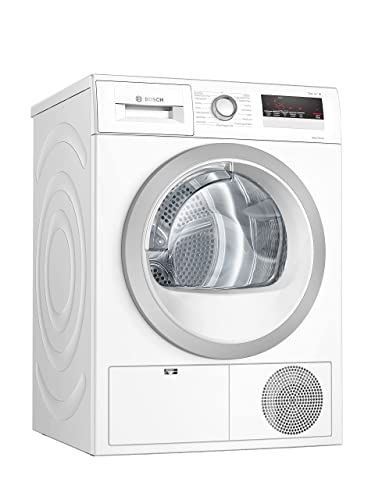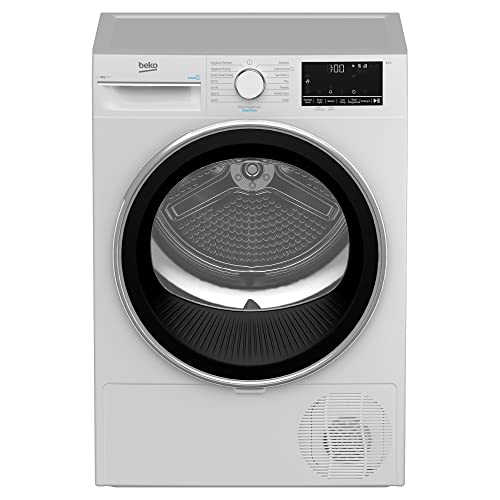See What Washer Dryer Heat Pump Tricks The Celebs Are Using
페이지 정보
작성자 Ruben Banvard 댓글 0건 조회 84회 작성일 24-06-03 00:42본문
 Heat Pump washer dryer Heat pump, isaevclub.Ru, Dryer
Heat Pump washer dryer Heat pump, isaevclub.Ru, Dryer Heat pump dryers use refrigerants and a compressor to convert thermal energy from hot into cold air. This condenses the moisture that your clothes absorb. They're generally about 28 percent more efficient than vented dryers.
Heat pump dryers use refrigerants and a compressor to convert thermal energy from hot into cold air. This condenses the moisture that your clothes absorb. They're generally about 28 percent more efficient than vented dryers.These dryers don't vent outside and aren't as noisy as traditional vented dryers. They're also a good option for apartments where you can't punch holes in the wall to create a vent.
Energy Efficiency
The laundry industry is searching for ways to reduce energy consumption in their facilities. The laundry industry has looked at replacing washers and dryers for more efficient models. Another option is to utilize heat pump washer dryers to save energy while doing laundry.
In a washer dryer with a heat pump the use of hot air to draw moisture out of the clothes. The air is then pushed to the dryer's evaporator which evaporates the water and cools it. The vapor is then condensed into droplets that are collected to drain. This system consumes less energy than a dryer that blasts humid, warm air outside via the vent.
As a result, heat pump washer dryers use about 28 percent less electricity than normal washer dryers. This savings in energy can be significant, particularly if you use the dryer frequently enough to cover the initial purchase.
Heating pump washer dryers are energy-efficient because they don't need to generate cheap heat pump tumble dryer themselves by using electric coils or burners. Instead, they transfer thermal energy through an independent loop. They collect and recycle the hot air from inside the drum. Then, they transfer it to the Evaporator Washer Dryer Heat Pump and then back to the drum to repeat the process.
They are also more sustainable than traditional dryers that release conditioned outdoor air through the vent. This air has already used up a lot of energy and money in the form air conditioning to cool the temperature down or a furnace for heating the temperature inside the building.
A hybrid sorption heat pump washer dryer can be more efficient than an electric model. The sorption process is labor-intensive however it can be coupled with heat pump technology to create an efficient machine. Khouya and Cranston were the first to develop this combination of heat pumps and sorption. They studied the effects of various parameters, including optical efficiency and concentration ratio on the performance of the system.
Condensation
They unlike conventional dryers circulate heated air. This means they are better for the environment and they're also less expensive to run in the long term. It is crucial to understand that recirculating hot air could result in condensation, which could result in mold or mildew.
Condensation happens because the recirculated atmosphere loses energy due to internal losses. This can be used to compensate for the heat loss due to evaporation. This will result in a slight rise in the temperature of the recirculating air. As the hot air recirculates on the cold side, it collects the water vapour from wet clothes. It turns into liquid water that drips into the lint tube or tray.
When the lint tube or lint tray gets full, it needs to be emptied out in order to avoid mildew and mold issues. The trays should also be cleaned regularly. This process is fairly simple and the majority of tray can be removed to make cleaning easier. It's also important to keep the lint filter clean in the dryer which can prevent the blockage and condensation.
Another issue that could arise from the condensation caused by heat pump dryers is that it may take longer than conventional dryers to dry a load. They operate at a lower temperature, which makes it more difficult to dry the clothes.
It is also important to check for leaks in your ventilation system. If the duct is damaged, it is likely to leak water, which could cause the problem of condensation. The duct that is used for ventilation must be properly sealed to avoid water leakage from the dryer into the home. It is essential to keep the venting hose in an upright position and not let it hang too low. This can lead to condensation. Examine the vent ducts for obstructions. Lint and other debris can build up over time and cause venting issues.
Noise
The heat pump inside your dryer produces a low humming sound when it is operating. This is a normal sound and it is an indication that the system is operating properly.
If you hear a rattling sound, or scraping, during your washing cycle, it could mean that your machine is rattling up against a wall, or an appliance. If this is the situation it is possible to move your dryer away from obstructions to eliminate the noise. If the noise is coming from the machine, this could also be an indication that you have some loose parts or a blocked fan.
Another reason for rattling could be that your Miele dryer is stuffed with clothes. This could cause the dryer to have to work harder to turn. Try to remove some of the clothing to help reduce the load.
The sound of a rattling could be due to the drum bearings, which can wear out over time, causing a rattling noise. Check to see if the bearings are in good condition. If they are not, you may think about having an expert replace them.
The baffles in your dryer may also create a an eerie sound when drying. Baffles are excellent to stop your clothes from sticking to each them and aid in the tumble dryers heat pump vs condenser and fluttering of your clothes. If your baffles are loose change or are worn, they may be rubbing against the side and create a clumping sound. Examine the baffles to determine whether any objects are stuck and clean them as necessary.
This could be a sign of a unbalanced or loose blower wheel. The wheel circulates air through the dryer and out the exhaust vent. However, if it's damaged or blocked by debris or lint, this could cause it to produce an eerie sound.
If your Miele dryer continues to make loud rattling and grinding noises after you've tried these troubleshooting steps, it may be a problem with a component. This will likely require removal of the cabinet as well as the dryer drum to discover what's causing the problem It is recommended to call an expert in appliance repair for assistance.
Maintenance
A few simple maintenance tips can prevent many dryer and washer issues. For instance, regularly cleaning the slots and lint traps will help you save on energy bills and cut down on drying time. Follow the manufacturer's recommendations for the condenser.
Heat pump dryers come with an additional filter in addition to the normal lint trap. The filter protects the coils against the lint contained in the recirculated lint. The filter needs to be cleaned every few cycles using a cloth and vinegar or dish soap. Maintaining the moisture sensor is essential. The moisture sensor, washer dryer heat pump located in the door of the dryer is used to show that the load is dry enough. It is important to clean the sensor from time to time using a soft cloth and a little water or mild dish soap.
If your dryer is taking longer than usual to complete an entire cycle, it might be necessary to clean the heat exchanger. This is a simple process and should be performed once a month. The drain hose must be removed (A) first. Mix neutral detergent with liquid and then put the other end of the accessory tube into the hole (B). Finally, place the other end of the hose in the hole (A). Allow the mixture to soak for 30 minutes, and then rinse and dry it.
댓글목록
등록된 댓글이 없습니다.